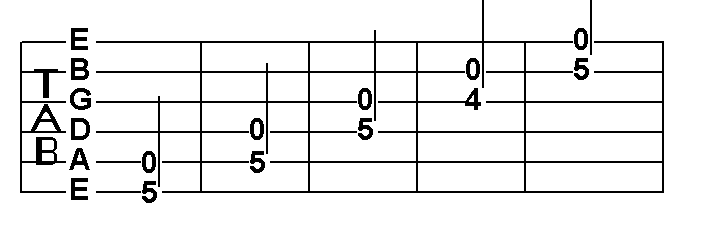Mike Moxcey ©2005
Guitar Tuning
The guitar is one of the most popular instruments in the world.
It has a nice full sound when just playing basic chords and provides a wonderful backup behind any singer.
There are many different guitar tunings, but there is one main standard:
E A D G B E from the 6th string (heaviest) to the first.
This covers a two-octave range which gives a much broader sound than the banjo, mandolin, or ukulele.
-
The basic tuning strategy is to:
- tune the 6th string, the heaviest one, to an E note from a piano or tuner or pitchpipe or some other device.
-
Then you fret the 6th string at the 5th fret and tune the 5th string to that note (A).
-
Then you fret the 5th string at the 5th fret and tune the 4th string to that note (D).
-
Then you fret the 4th string at the 5th fret and tune the 3rd string to that note (G).
-
Then you fret the 3rd string at the 4th fret and tune the 2nd string to that note (B).
-
Then you fret the 2nd string at the 5th fret and tune the 1st string to that note (E).
Here is what the tuning notes look like in tab. For each pair of doubled notes, the open string is the one you’re trying to tune and the fretted one is the note you strike first to hear what the open string should sound like.

The horizontal lines on the tab are strings.
The bottom line of the tab stands for the top string, the 6th string or the thickest one of the guitar.
The top line of the tab stands for the 1st string of the guitar, the one that is closest to the floor.
The numbers mean to pluck a string.
“0” means pluck it open (unfretted).
A number means to fret the string at the appropriate number and then pluck it.
Techniques Index
